I’m not sure how many of you are adept at wine tasting but I had my first experience by walking into a tasting room and jumping in. I think some people think that it’s a ritual that they don’t want to attempt. That’s how I felt at first. As if I could do or say something wrong…I didn’t know what I was doing! The truth is, the ritual is the same (in the US anyway) and the experience and tasting part is specific to the person tasting. The smells and flavors that you derive out of your tasting are your own. There are tools to help you describe what you taste and smell but ultimately, it’s all you!
So, here is your Wine Tasting 101 on the ritual part of tasting wine. It’s pretty uniform but if you’ve never done it, it can be quite intimidating. Here’s my guide to help you through it. Good luck and may you enjoy your future experience tasting wine!
The 4 S’s that will help you be a better taster and evaluator of wine:
See:
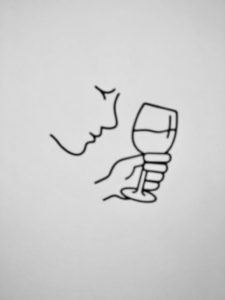
Look straight down into the glass. Evaluate the wine for color and clarity.
Is the color deep or light? Can you see through it? Tilt the glass away from you over a white surface (table, napkin, etc.).
- White wine: Pale Yellow/Green, Straw, Gold, Amber
- Red wine: Ruby, Garnet, Purple, Tawny
- Is the wine Light, Medium, or Full-bodied?
- Deeper, richer color suggests a fuller-bodied wine
- Lighter, opaque color suggests a lighter-bodied wine
Swirl:

Swirl the glass around so that the wine moves around the bowl of the glass. Placing the glass on a table might be a safer option. This will aerate the wine. Notice if “legs” or “tears” appear on the sides of the glass.
- Adding air to wine will open up its flavor
- Legs or tears on the sides of the glass suggest a bigger, more dense, higher alcohol wine (which, BTW is more fun for everyone later)
Smell:
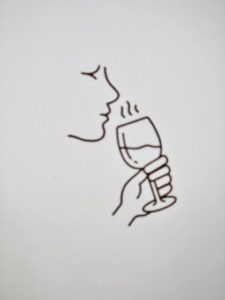
Place your nose over the bowl of the wine glass. Inhale the aroma deeply then take a series of quick, short sniffs.
- What do you smell? Repeat this as needed.
- Try to describe what you are smelling. Remember, there are NO wrong answers.
Sip:
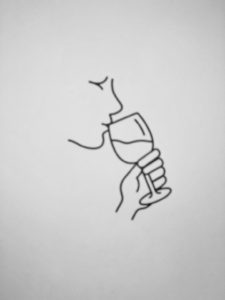
Take a sip (not a large swallow) of wine into your mouth and try sucking on it as if pulling it through a straw. This aerates the wine and circulates it in your mouth.
- Evaluate the taste for: flavor and sweetness
- Flavor – what do you taste? Is it salty, sweet, bitter, sour, umami (savory)? Is it complex? Does it change over time in your mouth?
- Sweetness – Is the wine Dry, Off-Dry, Semi-Sweet, or Sweet?
- Evaluate for: tannins and acidity
- Acidity (White/Red) – The tingling sensation at the back and sides of your mouth. Rate the wine for high or low acidity. The acidity helps balance out the wine in the aging process.
- Tannins (Red) – The sense of dryness in your mouth. Rate the wine for high or low tannins. Tannins provide a wine with structure.
The ritual of wine tasting is not only to describe the wine but to decipher what types of wines you like and would buy and enjoy on a regular basis. Red or White? Sweet or Dry? You decide. You are the master of your destiny when it comes to wine. I discovered what I really enjoyed years ago and have found that I pretty much stick to a few general categories unless I’m doing a formal tasting. I do love to experiment, but if I’m just having a glass at home, I can keep to a wine category that I love and it will usually be on the money. Taste, love, buy, enjoy! Try a wine tasting, discover what you love and go with it…every wine in your favorite category. From the New World wines of the US, Australia, New Zealand, Chile, Argentina, and South Africa to the Old World wines of Europe…you do you.
Taste and enjoy!
Cheers!
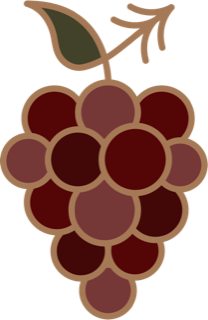
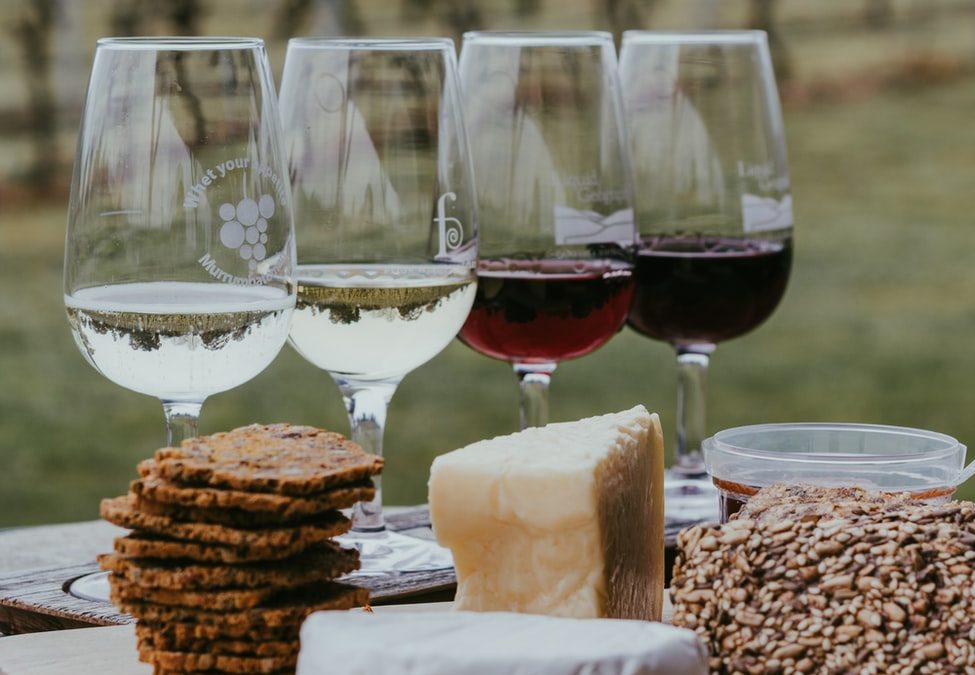
Yes! I have often felt intimidated it comes to trying new wines. That’s why I try to go to several tastings a year. They usually have wines from regions I’ve never heard of. I had a Slovakian wine once. Who knew?
I also think I would feel more comfortable if I had some
One like you as a coach when trying new wines.😉